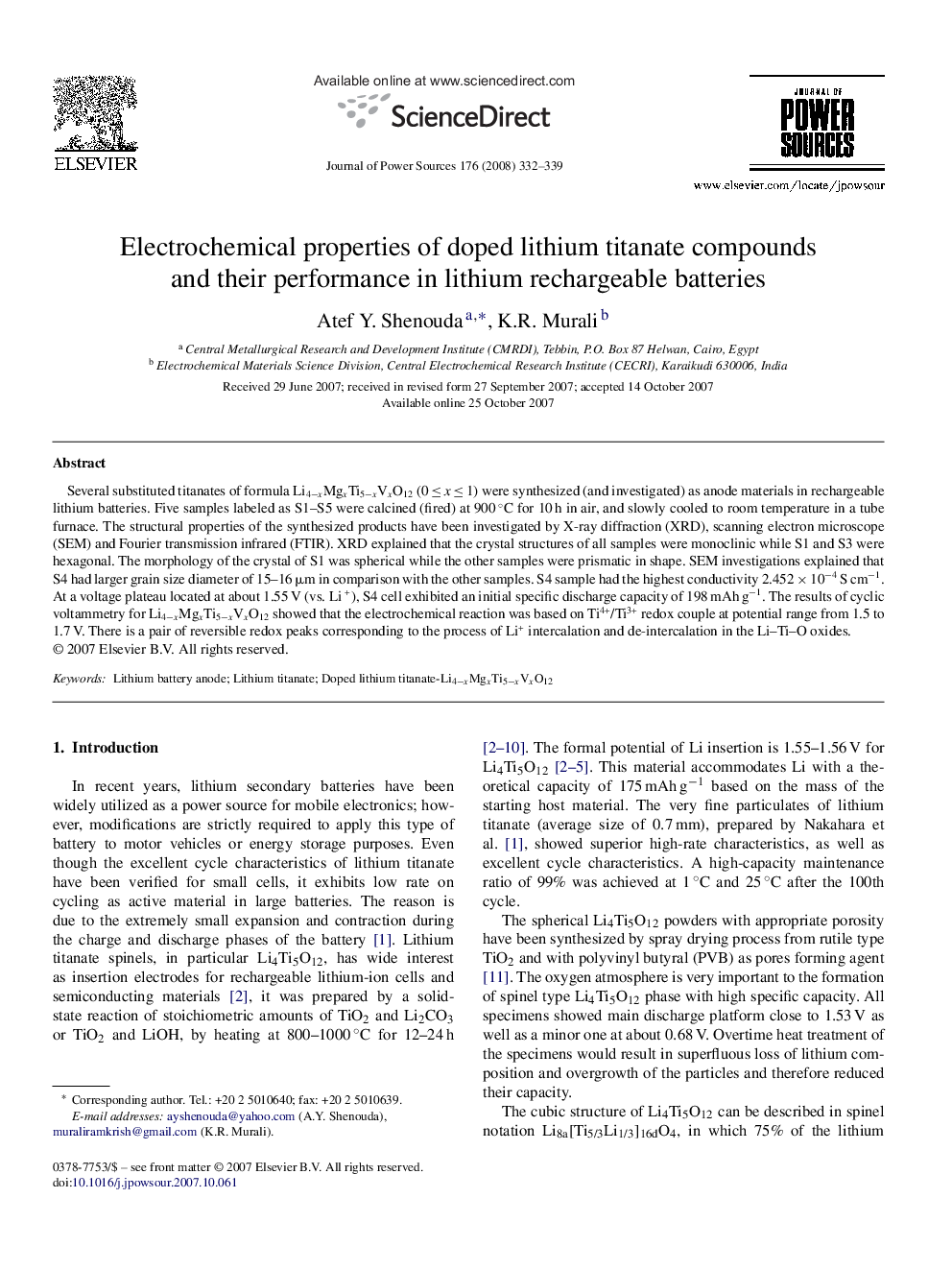| Article ID | Journal | Published Year | Pages | File Type |
|---|---|---|---|---|
| 1285903 | Journal of Power Sources | 2008 | 8 Pages |
Several substituted titanates of formula Li4−xMgxTi5−xVxO12 (0 ≤ x ≤ 1) were synthesized (and investigated) as anode materials in rechargeable lithium batteries. Five samples labeled as S1–S5 were calcined (fired) at 900 °C for 10 h in air, and slowly cooled to room temperature in a tube furnace. The structural properties of the synthesized products have been investigated by X-ray diffraction (XRD), scanning electron microscope (SEM) and Fourier transmission infrared (FTIR). XRD explained that the crystal structures of all samples were monoclinic while S1 and S3 were hexagonal. The morphology of the crystal of S1 was spherical while the other samples were prismatic in shape. SEM investigations explained that S4 had larger grain size diameter of 15–16 μm in comparison with the other samples. S4 sample had the highest conductivity 2.452 × 10−4 S cm−1. At a voltage plateau located at about 1.55 V (vs. Li +), S4 cell exhibited an initial specific discharge capacity of 198 mAh g−1. The results of cyclic voltammetry for Li4−xMgxTi5−xVxO12 showed that the electrochemical reaction was based on Ti4+/Ti3+ redox couple at potential range from 1.5 to 1.7 V. There is a pair of reversible redox peaks corresponding to the process of Li+ intercalation and de-intercalation in the Li–Ti–O oxides.
